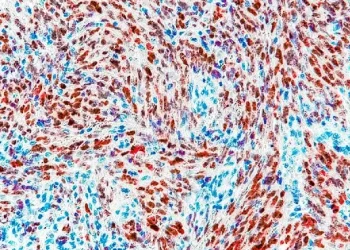A team of National Institutes of Health (NIH) scientists has demonstrated a promising gene-editing approach that reduces the severity of late-onset Tay-Sachs disease (LOTS) in human cells and mice.
The advancement could transform future treatments for this rare genetic disorder and other lysosomal storage diseases.
Introduction
In a significant step for rare disease research, NIH scientists successfully used a novel gene-editing method to enhance enzyme activity in LOTS. Conducted in Bethesda, Maryland, this pre-clinical study may open the door to targeted therapies for similar neurological disorders that currently lack effective treatments.
What Is Late-Onset Tay-Sachs?
Late-onset Tay-Sachs is a rare form of Tay-Sachs disease that emerges in late childhood or adulthood. Symptoms may include:
-
Progressive muscle weakness
-
Loss of coordination
-
Muscle spasms
-
In some cases, cognitive decline
Unlike the infantile form, LOTS progresses more slowly, with patients typically retaining some enzyme activity.
The NIH Breakthrough
Researchers targeted the HEXA gene, which controls production of the enzyme beta-hexosaminidase A—vital for breaking down GM2 ganglioside, a fatty substance in the brain.
In LOTS patients, mutations in the HEXA gene reduce enzyme activity, allowing GM2 ganglioside to accumulate and damage nerve cells.
By correcting the HEXA gene in both human cell cultures and a mouse model, the team increased enzyme activity by approximately 10%. In mice, this slowed disease progression, delayed symptom onset, and significantly extended lifespan.
“With LOTS, a slight correction will go a long way,”
said Dr. Richard Proia of NIH’s National Institute of Diabetes and Digestive and Kidney Diseases.
“We’ve figured out that opening the door to increased enzyme activity is possible. Now we have to figure out how to do it in a person.”
Potential Impact Beyond LOTS
The approach could be relevant to other lysosomal storage disorders, including:
-
GM1 gangliosidosis
-
Sandhoff disease
-
Niemann-Pick disease
-
Krabbe disease
-
Gaucher disease
These disorders share similar biochemical pathways, meaning a successful LOTS therapy could have wide-reaching implications.
Challenges Ahead
Delivering the gene edit to the brain and central nervous system is the next major hurdle. Many gene-editing therapies use adeno-associated viruses (AAV) as delivery vehicles.
While effective, AAVs face two challenges:
-
Pre-existing immunity — Some adults already have antibodies that neutralize the virus.
-
Blood-brain barrier — AAVs must be engineered to cross this barrier effectively.
Researchers are exploring improved delivery vectors to overcome these issues.
Current and Future Research
The NIH Clinical Center currently follows about 25 LOTS patients, including one whose donated cells were pivotal to this study. This participant carries two copies of the mutated HEXA gene, providing a unique model for research.
Dr. Cynthia Tifft of NIH’s National Human Genome Research Institute described the participant as “eager and engaged” despite the disease’s challenges, underscoring the human impact of this scientific progress.
Prevalence and Genetic Risk
Mutations in the HEXA gene occur more frequently in certain populations, including:
-
Ashkenazi Jewish communities
-
French-Canadian communities in Quebec
-
Cajun populations in Louisiana
-
Old Order Amish communities in Pennsylvania
Carrier screening is common in the U.S. for prospective parents in at-risk groups.
Enzyme Activity Levels in Tay-Sachs Variants
| Tay-Sachs Form | Average Enzyme Activity | Age of Onset | Typical Prognosis |
|---|---|---|---|
| Infantile | 0% | 3–6 months | Fatal by age 4–5 |
| Juvenile | Minimal | Early childhood | Fatal in teens |
| Late-Onset | 4–6% | Late childhood to adulthood | Variable progression |
Why This Matters
LOTS affects an estimated 500 people worldwide. Even a small improvement in enzyme activity could significantly slow the disease and improve quality of life.
While not yet a cure, this research lays essential groundwork for future clinical trials.
Sources: National Institutes of Health.
Prepared by Ivan Alexander Golden, Founder of THX News™, an independent news organization delivering timely insights from global official sources. Combines AI-analyzed research with human-edited accuracy and context.









